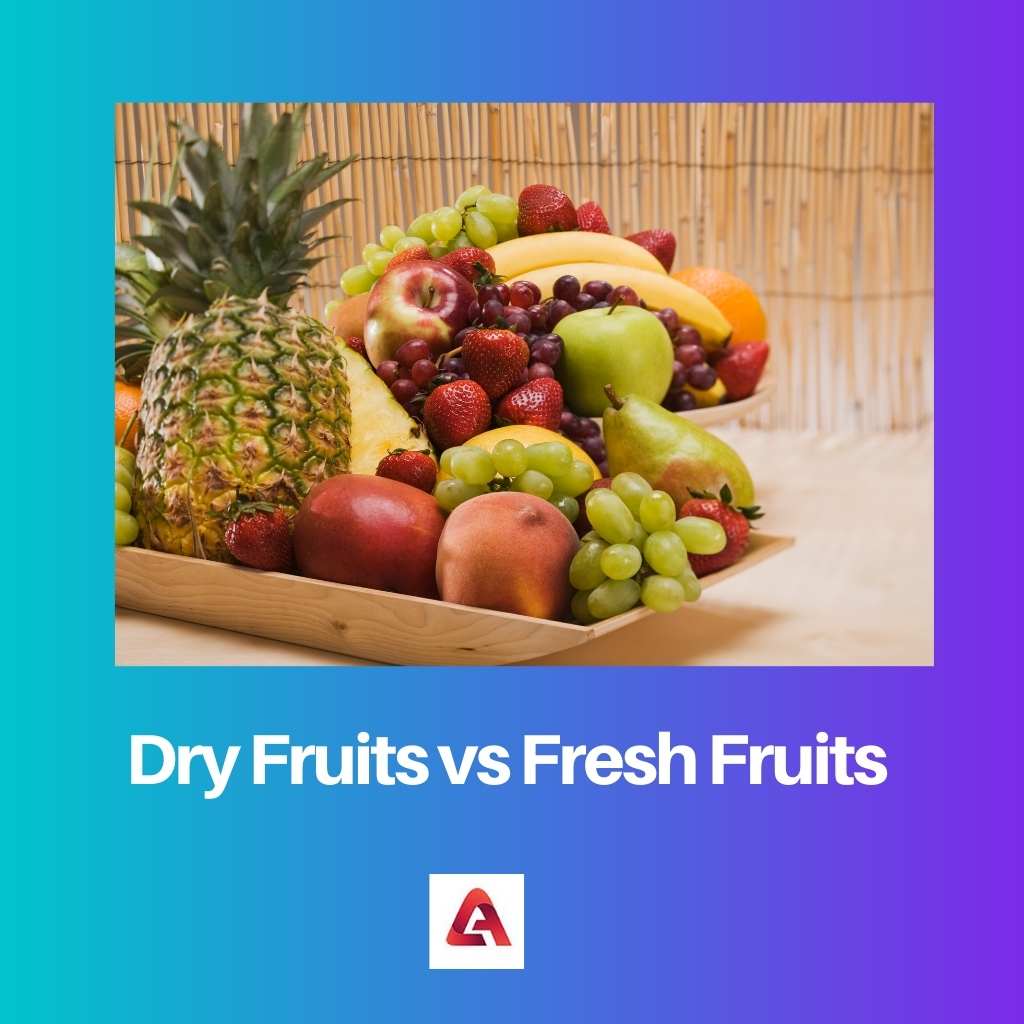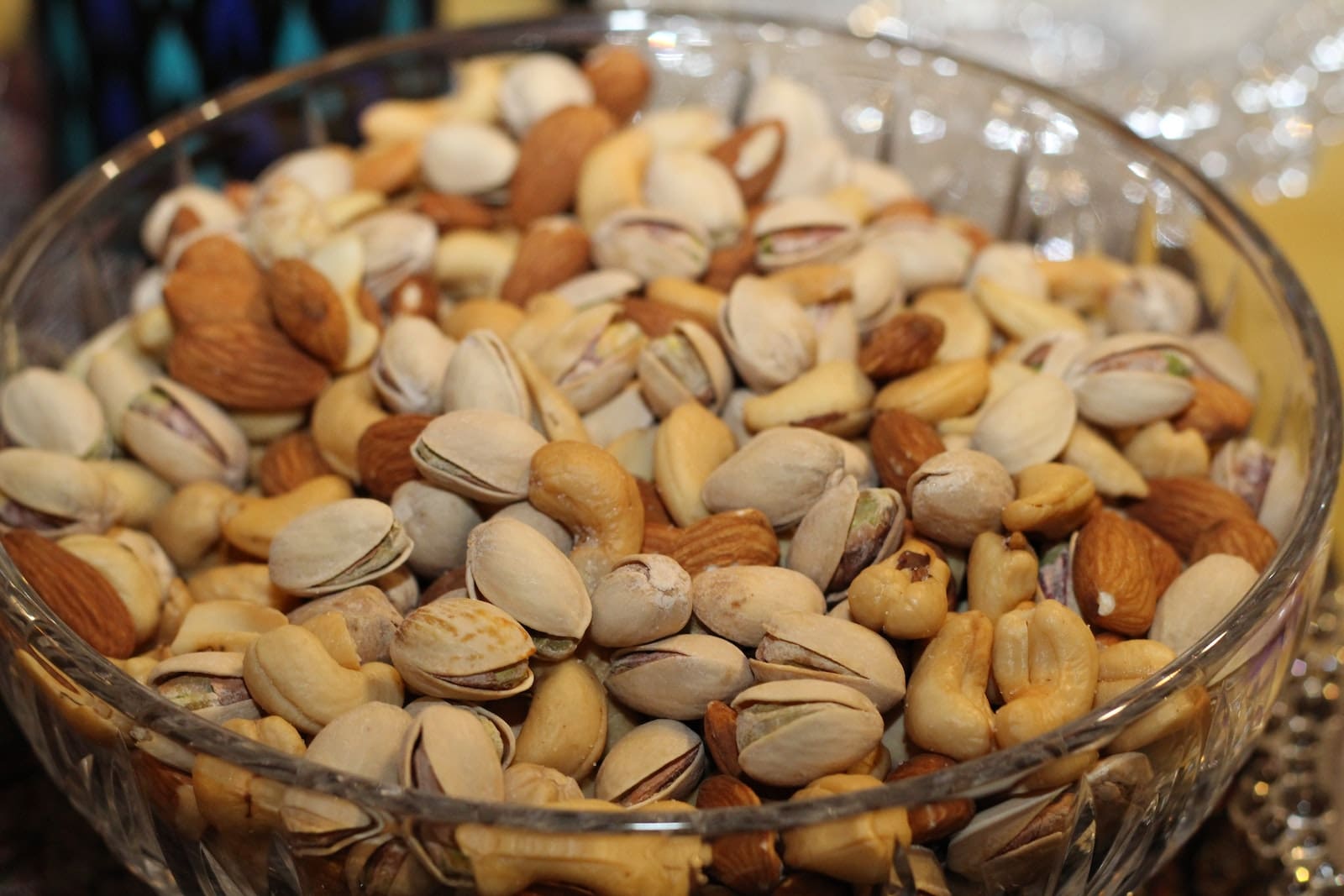Consumption of fruits regularly can improve overall health and minimize the risk of other diseases. Fruits are food sources that have high nutrient density.
Fruits are available in major two forms in the market that are dry fruits and fresh fruits. Both types have distinct features.
Key Takeaways
- Dry fruits have had their water content removed through natural sun drying or specialized equipment, while fresh fruits are consumed in their natural, unprocessed state.
- Dry fruits have a longer shelf life and higher calorie density than fresh fruits, making them convenient for snacking and storage.
- Both dry and fresh fruits offer various health benefits, but fresh fruits contain more water and some heat-sensitive nutrients that can be lost during drying.
Dry Fruits vs Fresh Fruits
Dry fruits are fruits that have had their moisture content removed, while fresh fruits are unprocessed fruits that are eaten raw or used in recipes. Dry fruits are more calorie-dense and have a longer shelf life, while fresh fruits are low in calories and highly perishable but fresh in nature.

Dry fruits contain a high amount of calories in sugar. Some even contain salts which can trigger other problems if eaten in excess.
Examples of dry fruits are apricots, raisins, figs, dates, dried plums or prunes, cashews, walnuts, almonds, hazelnuts, and various other types.
While fresh fruits are not processed and do not contain any added salt or sugar. The number of calories and fiber present naturally in the fruit is ideal for moderate consumption.
Examples of fresh fruits are apple, banana strawberry, citrus fruits like oranges and limes, berries, tropical and exotic foods, stone fruits, and various other types.
Comparison Table
| Parameters of Comparison | Dry Fruits | Fresh Fruits |
|---|---|---|
| Type of tissue | The pericarp in dry fruits is not pulpy or succulent | Fresh fruits have a primary tissue structure that is soft and succulent |
| Type of pericarp | Dry fruits have a hard, dry, and papery type of pericarp at the level of maturity of the fruit | Fresh fruits have a pulpy and soft type of pericarp at the level of maturity of the fruit |
| Differentiation in layers | Dry fruits do not have any layer of differentiation in the pericarp | Fresh fruits have three layers of distinction in the pericarp and are known as endocarp, mesocarp, and epicarp |
| Standard serving size | One cup of fresh fruit is the standard serving size for an adult | One-fourth cup of dried food is the standard serving size for an adult |
| Shelf life | Dry fruits have longer shelf life | Fresh fruits have a comparatively shorter shelf life. |
What are Dry Fruits?
Dry fruits are the dried form of fruits that have a high content of minerals and vitamins. The drying process of the fruits is known as dehydration. During this process, the fruits lose a significant amount of water and vitamins.
Dry fruits also lose a considerable percentage of volume during the drying process. This increases the nutrient, sugar, and calorie content in the dry fruits and eventually becomes concentrated.
So consumption of dry fruits provides a higher intake of nutrients and calories than other food. Some dry fruits have sugar additives that increase the content of calories in the fruit.
Dry fruits can be a rich source of antioxidants. According to the Journal of the American College of Nutrition, a vital antioxidant type called phenol was found in dried fruits like dates and figs and not in fresh fruits.
Dry fruits do not have any pulp or juice in the fruit. The fruits look similar to a shell, nut, or pod.
Contents like fiber are an essential component for the smooth running of the digestive system and dry fruits have been proven to contain high content of fiber.
The content is even comparatively higher than an equal and similar serving of fresh fruits. The seed dispersal technique in dry fruits is through expulsion, wind pollination, or attachment on the fur or skin of the animals.

What are Fresh Fruits?
Fruit is a part of a flowering plant that bears the seed structure. The formation of fruit is from the ovary after the flowering of the plant is complete. It help plants to disseminate their seeds.
Fresh fruits are a primary source of food for animals as well as humans. The taste of most fresh fruits is sweet to sour, depending upon the variety and type.
Fresh fruits do not undergo any type of processing or other mechanisms. They are available in their natural form. Fresh fruits are mainly picked up before the ripening stage.
This provides the fruit enough time to get fully ripen while the fruit is being transported to other places. The time of developing the full range of minerals, vitamins, and other antioxidants is also reduced due to early picking up.
Fresh fruits have high water content and have pulp. Some fruits have skin that is very soft and is also edible. Fruits like apples and guava have soft skin and are edible.
However, fruits like watermelon and papaya have skin that is very hard and cannot be eaten. Fresh fruits have a shorter shelf life and should be refrigerated to increase the shelf life.
Fresh fruits retain their original water and juice content and do not lose their volume, unlike dried fruit. The nutrient content in the form of various vitamins and minerals is high in fresh fruits.
Fresh fruits are an ideal dietary option for people who are tracking their weight or trying to lose some pounds. The calorie amount provided in fresh fruits is moderate and does not lead to obesity.

Main Differences Between Dry Fruits and Fresh Fruits
- The calorie content in dry fruits is high while the calorie content in fresh fruits is comparatively lower.
- The content of minerals and vitamins in dry fruits is lower while the content of vitamins and minerals in fresh fruits is comparatively higher.
- The sugar content in dry fruits is high while the sugar content in fresh fruits is comparatively lower.
- Dry fruits have a smaller volume while fresh fruits have a bigger volume.
- Dry fruits contain preservatives to extend the shelf life while fresh fruits do not contain any preservatives.

- https://www.sciencedirect.com/science/article/pii/S0963996909003238
- https://citeseerx.ist.psu.edu/viewdoc/download?doi=10.1.1.299.7483&rep=rep1&type=pdf
